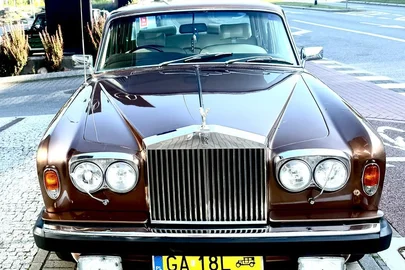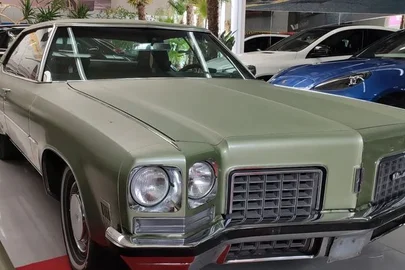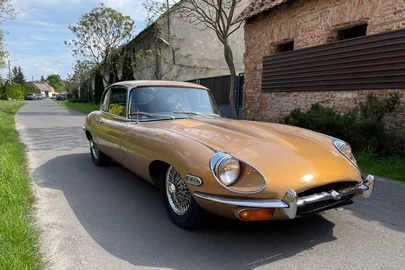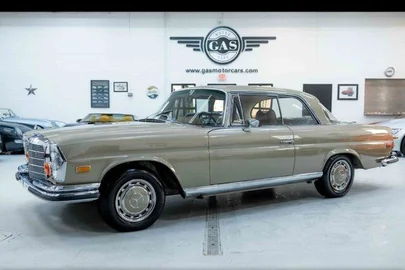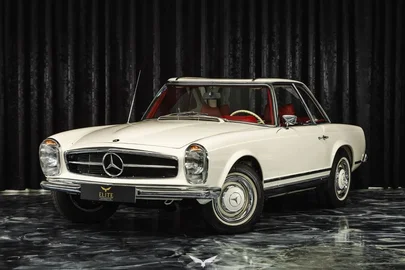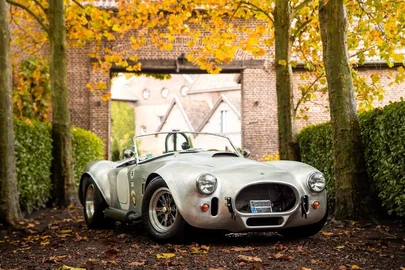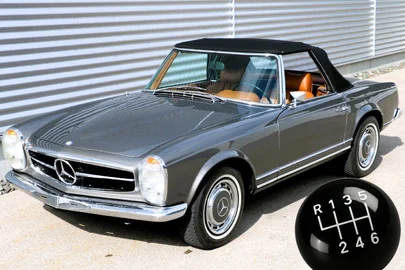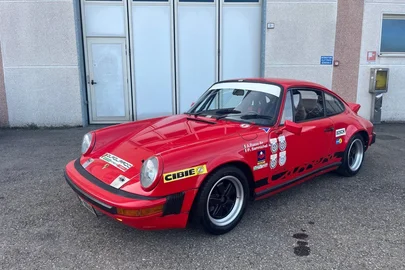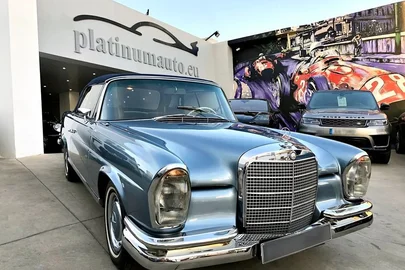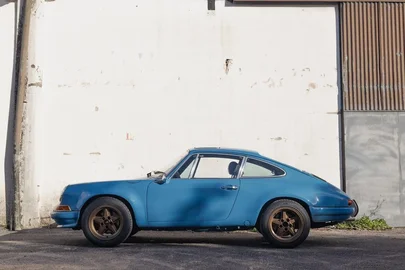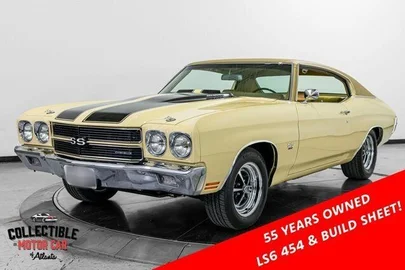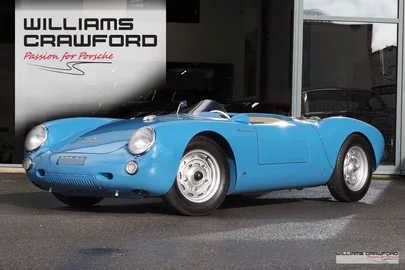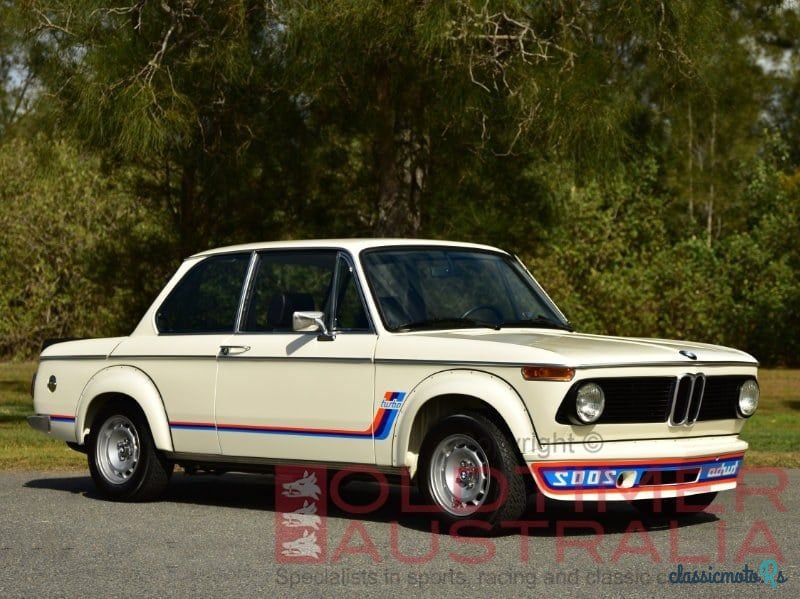
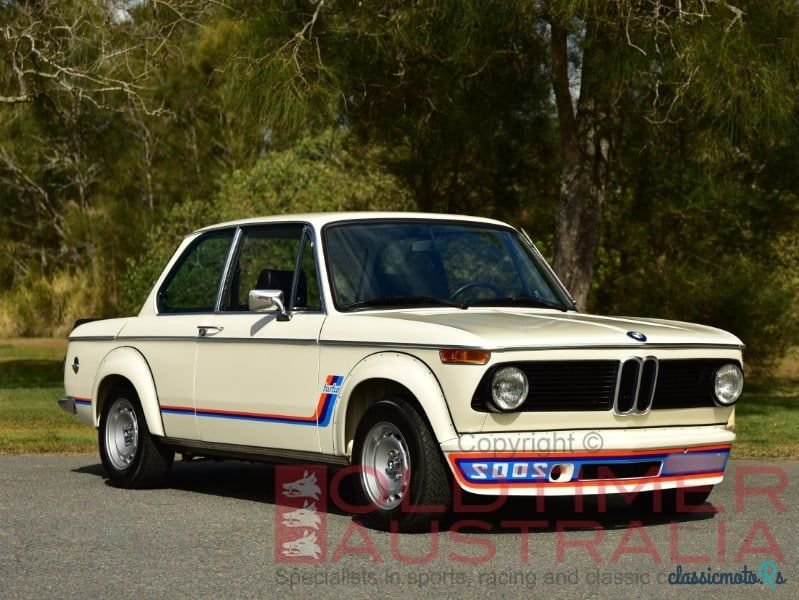
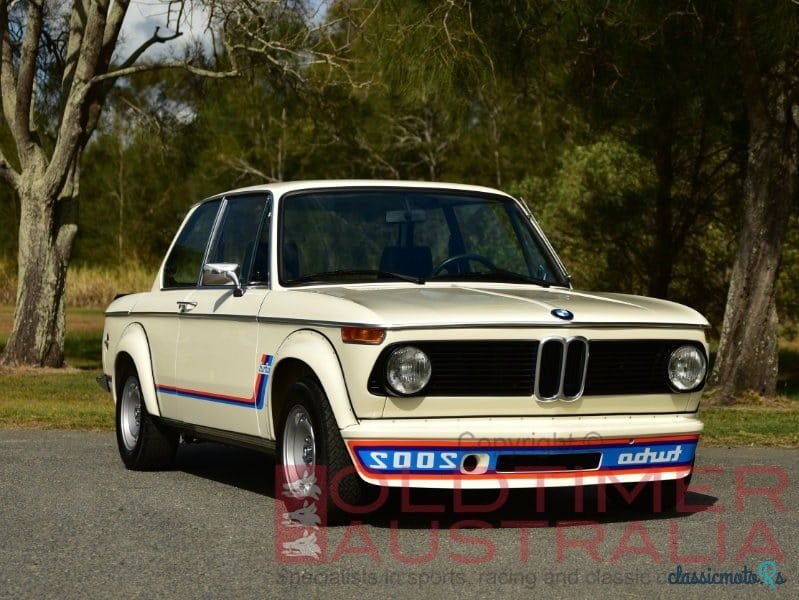
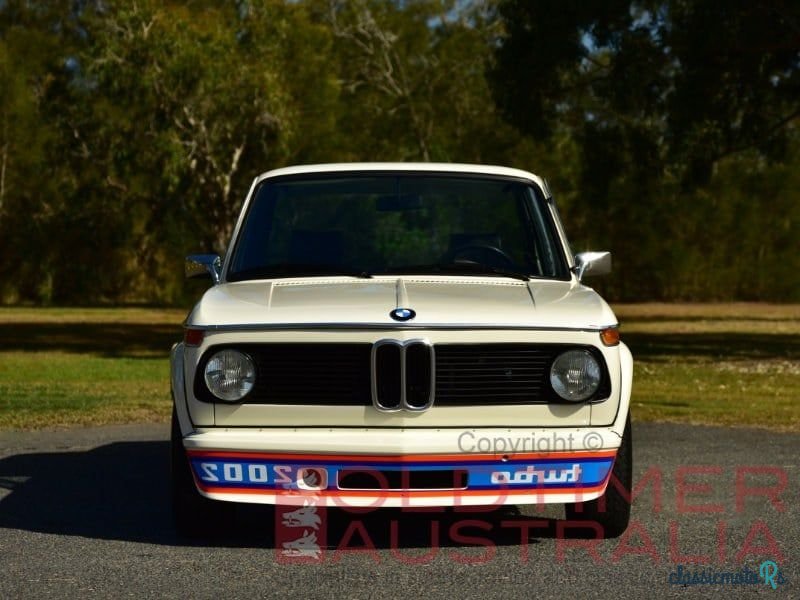
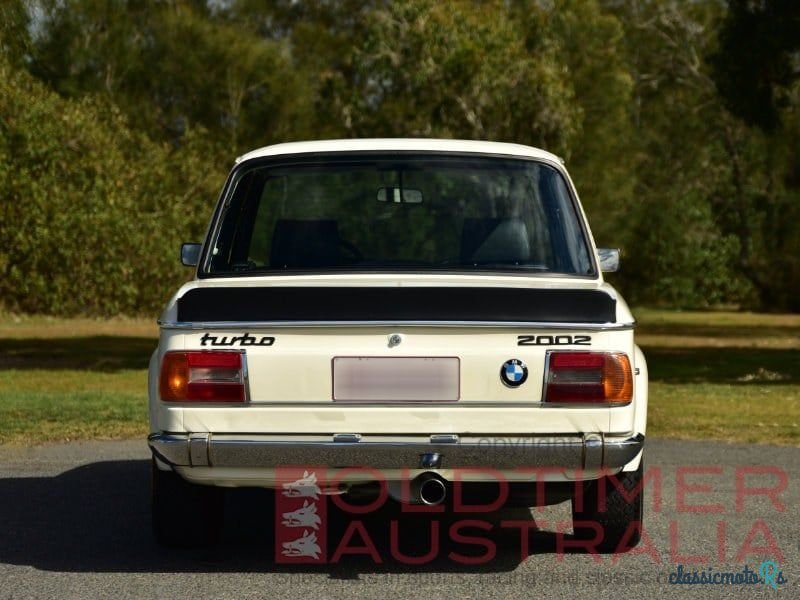
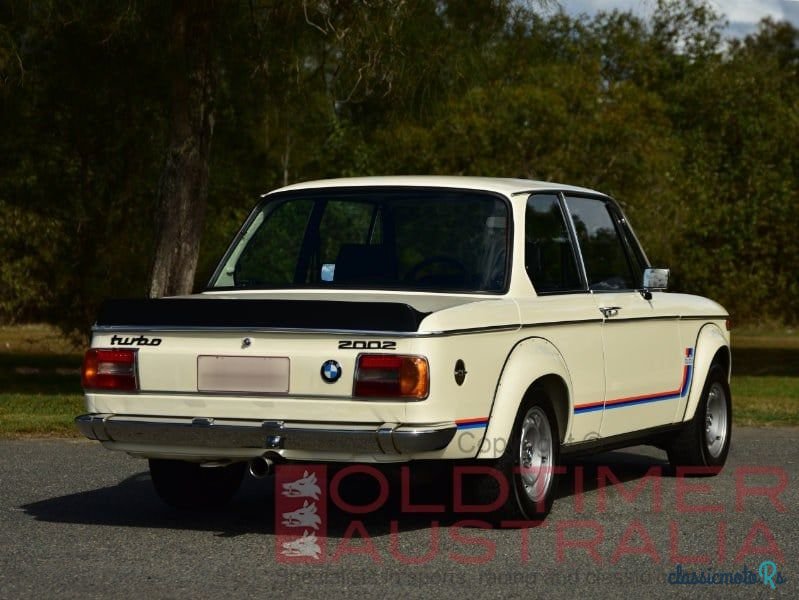
6 photos
1974' BMW 2002 Turbo
Report This Ad!Rate This!Bookmark This
£154,950Published 1 August 2024ID: jdP8vb
Expired
1 year, 4 months ago
1 year, 4 months ago
Information from the owner
Body: Coupe
Age: 50 years
Mileage: 97255 km
Fuel: Petrol
Transmission: Manual
Exterior color: White
Interior: Air Conditioning
Exterior: Spoiler
Seller's comments about 1974' BMW 2002 Turbo
Details:
Oldtimer Australia is delighted to offer for sale this 1974 BMW 2002 Turbo.
The BMW Birth Certificate on file confirms this car was delivered new to the Balcom Trading Co. Inc in Tokyo, Japan. This was the local BMW importer which got later absorbed into BMW Japan Corp, the first 100% owned subsidiary of a foreign car maker in Japan. The car has a production date of the 18th October 1974 and a delivery date of the 15th November 1974. The Birth Certificate states the car’s original colour was ‘chamonix’ (BMW white), which is how the car is presented today.
The Japanese history of this car is not known. At some stage it found its way to Australia and we know it resided in New South Wales. There is a photograph of the car on file with the NSW registration BJ82HS. The car was acquired by the previous owner who is a doctor and BMW enthusiast who lived in Adelaide, South Australia.
In October 2018 the car was acquired by its current Melbourne based owner. The car was in a partially disassembled state as the previous owner had commenced pulling the car apart to restore it. This was perfect for the car’s new owner who was looking for his next project. His plan was a nut and bolt restoration to a concours standard. He engaged Concourse Automotive Restorations in Geelong to do the body and paint, Auto Sprint Motors in Melbourne for the mechanicals and Unique Auto Interiors in Melbourne to do the trim. The fuel injection system was sent to highly regarded experts Saxon Parts in The Netherlands to be overhauled.
This was to be a ‘no expense spared’ restoration and where possible NOS parts were sourced for the car. Anything that needed to be replaced or repaired was replaced or repaired. The majority of the new parts were acquired from classic BMW specialists Jaymic in the UK, Rogers tii in the USA and Wallotnesch in Germany.
The restoration was completed just in time for the car to be displayed at Motorclassica in 2019. At that time the odometer read 85, 379km.
Since the car was restored, it has been used and enjoyed clocking up some 12, 000 km in the last 5 years. The car is a credit to the current owner and all who were involved in the restoration as it still presents today as a fresh restoration.
At some stage the engine block in the car was replaced. There is correspondence on file from BMW in Germany confirming that the engine currently in the car belonged to a BMW 2002 Turbo which was delivered new to France in January 1975. It is unknown when and where the engine was replaced.
Walking up to the car you just cannot help but being impressed with its appearance. The paint is in excellent condition and the decals on the car immediately tell you this car is not your ‘everyday’ BMW 2002. The flared wheel arches and the decals give the car a very aggressive stance. Even for the uninitiated, it only takes you a few seconds to realise the decals on the front air dam spell Turbo 2002 in reverse. This sends a firm warning to the car driving in front of you when they see you in their rear view mirror . . . please move out of the way!
Walking around the car it is difficult to find any imperfections. There is the smallest of blemishes in the paint on the lower part of the driver’s door and there are also some very small marks on the rear spoiler which have been touched up at some stage. All the decals on the car, which are a real feature, are in excellent condition. The stainless steel belt line trim, a unique design feature which runs right around the car, is in very good condition with only a few very small imperfections. The rest of the external trim, including the badges, lights and lenses is in excellent condition. The Hella headlights are the correct type and taillight lenses have the correct BMW markings on them.
The car is fitted with the correct 13 inch Mahle wheels, shod with Pirelli Cinturato tyres, size 185/ 70/ 13, which are date stamped 5118 (week 51, 2018).
Open the door and the first thing you will notice is the red instrument binnacle. This is another unique design feature that tells you this is not an ordinary BMW 2002. The interior itself is immaculate. The seats, door cards, dash, centre console and even the carpets present like new. The seats are firm and comfortable and provide ample support. When the current owner decided to restore the car he also decided to make it a more usable classic for the Australian climate and discretely install a modern electric air conditioning system. The air is fed to the cabin using period correct vents. The car is also fitted with EZ power steering.
Getting behind the wheel is easy and it does not take long to find that comfortable driving position. As you would expect from a BMW the interior is very business like and everything is exactly where you would expect it to be. The Turbo version of the 2002 also had an extra instrument binnacle with two gauges above the centre console. One gauge showing the turbo boost and the other one a clock. On this car the clock has been replace with a voltage meter.
We were very eager to find out if this car lives up to its reputation. The car starts easily and quickly settles into a smooth idle. With great anticipation we wait for the engine to warm up before taking the car out on the road for a short test drive. First impressions are good. The car feels solid, yet very nimble on the road. There are no rattles or squeaks and the car is easy to drive. This BMW 2002 Turbo is equipped with the more desirable 5 speed dog leg gearbox which works well with that typical German precision. Out on the road you quickly forget you are driving a 50 year old car. This car is just a lot of fun to drive and when pushed it is somewhat of a ‘pocket rocket’. The 4 cylinder engine is ‘only’ a 1, 990cc but with the KKK (Kuhnle, Kopp and Kausch) turbocharger it pushed out an impressive 170 bhp. Top speed was quoted as 210 km/ hr (130 mph) and the car could dash from 0 – 100 km/ h (60 mph) in around 7 seconds. There is just something about hearing that turbo spinning up every time you get close to 4, 000rpm.
A BMW 2002 Turbo is a very unique and rare car anywhere in the world with only 1, 672 having been produced. They were never sold new in Australia and only a handful have found their way to our shores. They tend to be tightly held and a result the opportunity to purchase this care presents a unique opportunity.
Accompanying the car is an extensive file, including photographs documenting the restoration of this car, a spare wheel, a tool kit, a first aid kit, a safety triangle, a fitted car cover, a workshop manual, a parts manual and various period brochures.
Highlights:
- Rare and desirable example of one the most iconic BMW’s.
- Beautifully presented example.
- Fabulous original colour scheme.
- Ready to show, use and enjoy
Price AUD $299, 950
Background:
On 7 March 1916 the Bayerische Flugzeugwerke (BFW) was established. The company was the result of a reorganisation of the Gustav Otto Flugmaschinenfabrik, a company founded by Gustav Otto in Bavaria, Germany, in 1910. The company was one of the aircraft pioneers in the early 20th century. A year later, in 1917, a Bavarian aircraft engine manufacturer by the name of Rapp Motorwerke changed its name into Bayerische Motoren Werke GmbH (BMW). That company transferred all its engine production assets to Bayerische Flugzeugwerke in 1922 and that company was then renamed to Bayerische Motoren Werke AG (BMW).
The company survived World War I and started focussing on the production of motorcycle engines, farm equipment, household items and railway brakes. In 1923 BMW produced its first motorcycle, the BMW R23.
In 1928 BMW purchased the Fahrzeug Fabrik Eisenach which built Austin Sevens under license. That is when BMW officially became an automobile manufacturer. The first car BMW sold under its own name was the BMW 3/ 15 which was basically a rebadged Austin 7. Throughout the 1930’s BMW focussed more and more on producing their own cars and expanded its range into sports cars and larger luxury cars.
During World War II the BMW factories were heavily bombed and severely damaged. Motor vehicle production was curtained and BMW has concentrated on building aircraft engines during the War. As a result, after the war the company was prohibited from producing aircraft or motor vehicles. Miraculously the company survived by making pots, pans and bicycles. It began manufacturing motorcycles again in 1948 and cars in 1952.
Its first post war effort was the BMW 501 which was built in a new factory in Munich. The car was reasonably successful and it effectively relaunched BMW. At the time BMW was also building its fabulous little Isetta, but the company was doing it tough financially. In 1955 the BMW 507 made its debut at the Waldorf Astoria hotel in New York. The 507 was roadster powered by a 3. 2 litre V8 engine and was meant to revive the companies sporting image. Instead, the high production cost led the company to the verge of bankruptcy. Only 252 examples were built before production ceased in 1959. As it turns out, it would take BMW nearly 30 years before it would produce another roadster. The company was in serious financial trouble in 1959 and only a large investment from a third party saved the company and prevented a takeover by Daimler-Benz.
It was the launch of the BMW ‘New Class’ cars in 1962 that proved to be a game changer for the company. Initially these were 4-door compact sedans aimed at the executives. The first one was the BMW 1500 which was first introduced at the September 1961 Frankfurt Motor Show. Other models like the BMW 1800, the successor of the 1500 the BMW 1600 and the BMW 2000 followed soon. In 1965 BMW introduced a coupe versions of the 2000, the 2000C and he 2000CS.
Around the mid 1960’s BMW recognised there was a market for a slightly smaller version of their ‘New Class’ cars. Around the same time they stopped producing the BMW 1600 they introduced the BMW 1600-2 which was a shorter two door model. In 1968 BMW started producing the two door BMW 2002 with its stronger 1, 990cc M10 engine.
In 1973 BMW introduced its first turbo charged production car at the Frankfurt Motor Show, the BMW 2002 Turbo. It produced 170hp and had a top speed of 211 km/ h. It was only available in two colours – Chamonix (white) and Polaris (silver) and all cars featured BMW motorsport colour scheme stripes and decals on the sides as well as the front air dam. Interestingly the car was introduced just before the 1973 oil crises and as BMW themselves said; “BMW had built a car that contradicted the spirit of the times like no automobile before”.
Only 1, 672 were ever built between July 1973 and June 1975, including twelve pre-production cars constructed between July and December of 1973. The BMW 2002 Turbo was only built as left hand drive.
Oldtimer Australia is delighted to offer for sale this 1974 BMW 2002 Turbo.
The BMW Birth Certificate on file confirms this car was delivered new to the Balcom Trading Co. Inc in Tokyo, Japan. This was the local BMW importer which got later absorbed into BMW Japan Corp, the first 100% owned subsidiary of a foreign car maker in Japan. The car has a production date of the 18th October 1974 and a delivery date of the 15th November 1974. The Birth Certificate states the car’s original colour was ‘chamonix’ (BMW white), which is how the car is presented today.
The Japanese history of this car is not known. At some stage it found its way to Australia and we know it resided in New South Wales. There is a photograph of the car on file with the NSW registration BJ82HS. The car was acquired by the previous owner who is a doctor and BMW enthusiast who lived in Adelaide, South Australia.
In October 2018 the car was acquired by its current Melbourne based owner. The car was in a partially disassembled state as the previous owner had commenced pulling the car apart to restore it. This was perfect for the car’s new owner who was looking for his next project. His plan was a nut and bolt restoration to a concours standard. He engaged Concourse Automotive Restorations in Geelong to do the body and paint, Auto Sprint Motors in Melbourne for the mechanicals and Unique Auto Interiors in Melbourne to do the trim. The fuel injection system was sent to highly regarded experts Saxon Parts in The Netherlands to be overhauled.
This was to be a ‘no expense spared’ restoration and where possible NOS parts were sourced for the car. Anything that needed to be replaced or repaired was replaced or repaired. The majority of the new parts were acquired from classic BMW specialists Jaymic in the UK, Rogers tii in the USA and Wallotnesch in Germany.
The restoration was completed just in time for the car to be displayed at Motorclassica in 2019. At that time the odometer read 85, 379km.
Since the car was restored, it has been used and enjoyed clocking up some 12, 000 km in the last 5 years. The car is a credit to the current owner and all who were involved in the restoration as it still presents today as a fresh restoration.
At some stage the engine block in the car was replaced. There is correspondence on file from BMW in Germany confirming that the engine currently in the car belonged to a BMW 2002 Turbo which was delivered new to France in January 1975. It is unknown when and where the engine was replaced.
Walking up to the car you just cannot help but being impressed with its appearance. The paint is in excellent condition and the decals on the car immediately tell you this car is not your ‘everyday’ BMW 2002. The flared wheel arches and the decals give the car a very aggressive stance. Even for the uninitiated, it only takes you a few seconds to realise the decals on the front air dam spell Turbo 2002 in reverse. This sends a firm warning to the car driving in front of you when they see you in their rear view mirror . . . please move out of the way!
Walking around the car it is difficult to find any imperfections. There is the smallest of blemishes in the paint on the lower part of the driver’s door and there are also some very small marks on the rear spoiler which have been touched up at some stage. All the decals on the car, which are a real feature, are in excellent condition. The stainless steel belt line trim, a unique design feature which runs right around the car, is in very good condition with only a few very small imperfections. The rest of the external trim, including the badges, lights and lenses is in excellent condition. The Hella headlights are the correct type and taillight lenses have the correct BMW markings on them.
The car is fitted with the correct 13 inch Mahle wheels, shod with Pirelli Cinturato tyres, size 185/ 70/ 13, which are date stamped 5118 (week 51, 2018).
Open the door and the first thing you will notice is the red instrument binnacle. This is another unique design feature that tells you this is not an ordinary BMW 2002. The interior itself is immaculate. The seats, door cards, dash, centre console and even the carpets present like new. The seats are firm and comfortable and provide ample support. When the current owner decided to restore the car he also decided to make it a more usable classic for the Australian climate and discretely install a modern electric air conditioning system. The air is fed to the cabin using period correct vents. The car is also fitted with EZ power steering.
Getting behind the wheel is easy and it does not take long to find that comfortable driving position. As you would expect from a BMW the interior is very business like and everything is exactly where you would expect it to be. The Turbo version of the 2002 also had an extra instrument binnacle with two gauges above the centre console. One gauge showing the turbo boost and the other one a clock. On this car the clock has been replace with a voltage meter.
We were very eager to find out if this car lives up to its reputation. The car starts easily and quickly settles into a smooth idle. With great anticipation we wait for the engine to warm up before taking the car out on the road for a short test drive. First impressions are good. The car feels solid, yet very nimble on the road. There are no rattles or squeaks and the car is easy to drive. This BMW 2002 Turbo is equipped with the more desirable 5 speed dog leg gearbox which works well with that typical German precision. Out on the road you quickly forget you are driving a 50 year old car. This car is just a lot of fun to drive and when pushed it is somewhat of a ‘pocket rocket’. The 4 cylinder engine is ‘only’ a 1, 990cc but with the KKK (Kuhnle, Kopp and Kausch) turbocharger it pushed out an impressive 170 bhp. Top speed was quoted as 210 km/ hr (130 mph) and the car could dash from 0 – 100 km/ h (60 mph) in around 7 seconds. There is just something about hearing that turbo spinning up every time you get close to 4, 000rpm.
A BMW 2002 Turbo is a very unique and rare car anywhere in the world with only 1, 672 having been produced. They were never sold new in Australia and only a handful have found their way to our shores. They tend to be tightly held and a result the opportunity to purchase this care presents a unique opportunity.
Accompanying the car is an extensive file, including photographs documenting the restoration of this car, a spare wheel, a tool kit, a first aid kit, a safety triangle, a fitted car cover, a workshop manual, a parts manual and various period brochures.
Highlights:
- Rare and desirable example of one the most iconic BMW’s.
- Beautifully presented example.
- Fabulous original colour scheme.
- Ready to show, use and enjoy
Price AUD $299, 950
Background:
On 7 March 1916 the Bayerische Flugzeugwerke (BFW) was established. The company was the result of a reorganisation of the Gustav Otto Flugmaschinenfabrik, a company founded by Gustav Otto in Bavaria, Germany, in 1910. The company was one of the aircraft pioneers in the early 20th century. A year later, in 1917, a Bavarian aircraft engine manufacturer by the name of Rapp Motorwerke changed its name into Bayerische Motoren Werke GmbH (BMW). That company transferred all its engine production assets to Bayerische Flugzeugwerke in 1922 and that company was then renamed to Bayerische Motoren Werke AG (BMW).
The company survived World War I and started focussing on the production of motorcycle engines, farm equipment, household items and railway brakes. In 1923 BMW produced its first motorcycle, the BMW R23.
In 1928 BMW purchased the Fahrzeug Fabrik Eisenach which built Austin Sevens under license. That is when BMW officially became an automobile manufacturer. The first car BMW sold under its own name was the BMW 3/ 15 which was basically a rebadged Austin 7. Throughout the 1930’s BMW focussed more and more on producing their own cars and expanded its range into sports cars and larger luxury cars.
During World War II the BMW factories were heavily bombed and severely damaged. Motor vehicle production was curtained and BMW has concentrated on building aircraft engines during the War. As a result, after the war the company was prohibited from producing aircraft or motor vehicles. Miraculously the company survived by making pots, pans and bicycles. It began manufacturing motorcycles again in 1948 and cars in 1952.
Its first post war effort was the BMW 501 which was built in a new factory in Munich. The car was reasonably successful and it effectively relaunched BMW. At the time BMW was also building its fabulous little Isetta, but the company was doing it tough financially. In 1955 the BMW 507 made its debut at the Waldorf Astoria hotel in New York. The 507 was roadster powered by a 3. 2 litre V8 engine and was meant to revive the companies sporting image. Instead, the high production cost led the company to the verge of bankruptcy. Only 252 examples were built before production ceased in 1959. As it turns out, it would take BMW nearly 30 years before it would produce another roadster. The company was in serious financial trouble in 1959 and only a large investment from a third party saved the company and prevented a takeover by Daimler-Benz.
It was the launch of the BMW ‘New Class’ cars in 1962 that proved to be a game changer for the company. Initially these were 4-door compact sedans aimed at the executives. The first one was the BMW 1500 which was first introduced at the September 1961 Frankfurt Motor Show. Other models like the BMW 1800, the successor of the 1500 the BMW 1600 and the BMW 2000 followed soon. In 1965 BMW introduced a coupe versions of the 2000, the 2000C and he 2000CS.
Around the mid 1960’s BMW recognised there was a market for a slightly smaller version of their ‘New Class’ cars. Around the same time they stopped producing the BMW 1600 they introduced the BMW 1600-2 which was a shorter two door model. In 1968 BMW started producing the two door BMW 2002 with its stronger 1, 990cc M10 engine.
In 1973 BMW introduced its first turbo charged production car at the Frankfurt Motor Show, the BMW 2002 Turbo. It produced 170hp and had a top speed of 211 km/ h. It was only available in two colours – Chamonix (white) and Polaris (silver) and all cars featured BMW motorsport colour scheme stripes and decals on the sides as well as the front air dam. Interestingly the car was introduced just before the 1973 oil crises and as BMW themselves said; “BMW had built a car that contradicted the spirit of the times like no automobile before”.
Only 1, 672 were ever built between July 1973 and June 1975, including twelve pre-production cars constructed between July and December of 1973. The BMW 2002 Turbo was only built as left hand drive.
